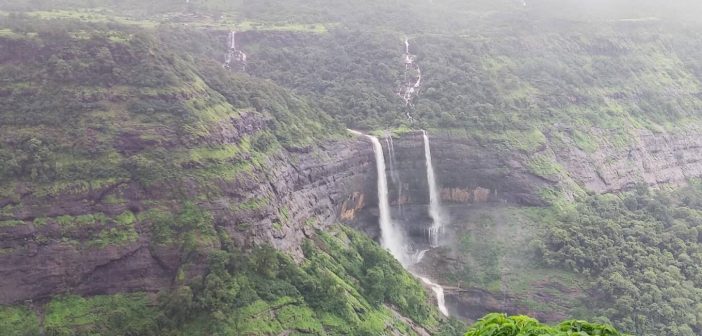The once-spectacular waterfalls that dotted the mountains along the Pune-Mumbai Expressway are now dwindling in number. These waterfalls, visible primarily during the monsoon, have seen a steady decline in flow and volume. There are several key factors contributing to this phenomenon, which are critical to understanding the environmental and infrastructural dynamics of the region.
Impact of Infrastructure Development
One of the primary reasons behind the reduction in the number of waterfalls is the massive infrastructure development in the region. The construction of the Pune-Mumbai Expressway itself altered the natural topography of the mountains. The tunnels and roadways that cut through the Western Ghats interfered with the natural flow of water. This has directly impacted waterfalls like the Kune Falls and others near Lonavala and Khandala, reducing their intensity and longevity during the rainy season.
Additionally, new tunnel construction projects, especially the Missing Link project under development, have further exacerbated the problem. The excavation and rerouting of water channels have led to the drying up of several seasonal streams that once formed these waterfalls.
Changing Rainfall Patterns
Another significant factor contributing to the reduction of waterfalls is the changing pattern of rainfall due to climate change. The Western Ghats, once known for receiving heavy and consistent monsoon rains, have experienced erratic rainfall patterns in recent years. This irregularity has resulted in shorter and less intense waterfall seasons. When the monsoons are weak, waterfalls such as Thokarwadi, Tamhini, and Khandi lose much of their characteristic beauty, affecting the local ecosystems and reducing water availability in downstream areas.
Urbanization and Deforestation
Urbanization around Lonavala and Khandala has also been a contributor to this phenomenon. The increasing number of resorts, farmhouses, and tourist spots has resulted in extensive deforestation, which disrupts the natural water retention capabilities of the mountains. The removal of trees reduces the soil’s ability to absorb and release water gradually, which would otherwise feed into the waterfalls. Areas like Tamhini Ghat have seen an influx of construction projects that further erode the natural environment.
Conservation Efforts
Efforts to conserve the few remaining waterfalls include controlled tourism and stricter regulations on deforestation. The Maharashtra government has also initiated projects to rejuvenate water bodies in the region. However, these efforts are still in their infancy, and without stringent execution, the waterfalls along the expressway may continue to diminish.
In conclusion, the decline of waterfalls along the Pune-Mumbai Expressway is a direct result of human intervention in nature, climate changes, and urban expansion. Addressing this issue will require a comprehensive approach that includes sustainable development, reforestation, and preservation of water channels.






